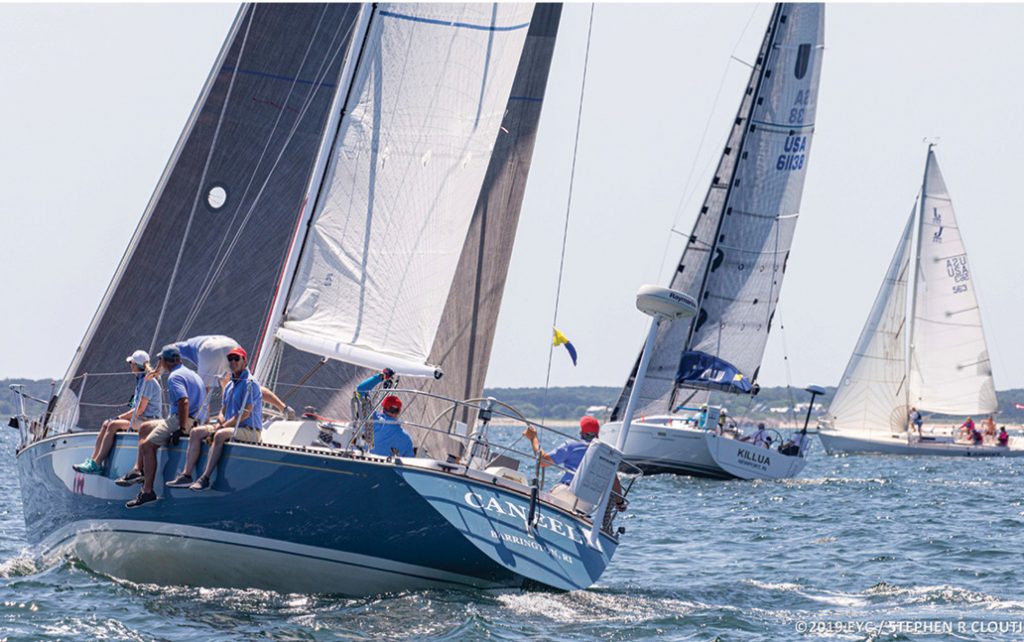When I talk about racecourse geometry, I mean how the marks are positioned relative to each other and the wind direction. When you are strategizing before the start, you should be concerned primarily with the location of the first mark. For example, is it dead upwind from the starting line? Here are some other things to consider.
Look for the first mark
One of my basic rules of thumb is that before you get to a mark you should always locate the next mark visually. So when you’re sailing around before the start, try to see where they put the windward mark. Then use this information to help plan your first leg strategy.
• The race committee (RC) does not have to designate the course until the warning signal (five minutes before your start), and they may not even have the first mark in place at this time. Therefore, you should first make a strategy using just your wind and current info. Then add in the course geometry when that becomes available.
• Under the new rules, you have only five minutes from the time the course is displayed until your start. So try to be around the committee boat at your warning signal. This way you will be sure to see what the RC displays for your course as well as the bearing and distance to the first mark.
• Unless you have no other choice, don’t rely on the compass bearing that the race committee posts for the first mark. Just because they post it doesn’t mean that’s where the mark will be. If at all possible, aim your bow at the mark before the start and get your own compass bearing. This is a good way to double-check the numbers and will give you a first-mark bearing on the same compass you use for your wind readings.

The position of the first mark can have a significant impact on the strategic plan that you make before the start. One of your most basic strategic principles is to sail the longer tack first, since that will give you the best chance of taking advantage of future windshifts. © 2019 EYC/Stephen R Cloutier
• Look at not only the bearing to the first mark, but the distance as well. The shorter the first leg, the sooner you will get to the sides of the course and hit a layline.
• Consider future windshifts. If the first mark is not to windward, maybe the RC thinks the wind will shift. If the mark is to windward but the wind shifts before or while you are on the first leg, then that will affect geometry.
• Don’t forget the current. Even if the first mark appears to be set directly upwind, a cross-current may make one tack longer.
• Once you’ve found the first mark, update your strategy so you follow these basic principles: Sail the longer tack first. Avoid laylines and corners as long as possible. When in doubt, stay closer to the middle of the course.
The starting line
The angle of the starting line is one of your most important geometric considerations. However, I recommend that you first figure out a strategic plan based on all other factors; then add in the starting line last. One reason for this is that the line is usually set quite late, and the RC can change it until the prep signal. Also, many sailors put way too much importance on the bias of the line and not enough on where they want to go on the first leg. ■
This article originally appeared in David Dellenbaugh’s Speed & Smarts, The newsletter of how-to tips for racing sailors. If you want to sail faster and smarter, log onto SpeedandSmarts.com.
A resident of Easton, CT, Dellenbaugh was tactician and starting helmsman for America3’s successful defense of the America’s Cup in 1992. He’s a Lightning World Champion, two-time Congressional Cup winner, seven-time Thistle National Champion, two-time winner of the Canada’s Cup, three-time Prince of Wales U.S. Match Racing Champion, and a winner of the U.S. Team Racing Championships for the Hinman Trophy.




